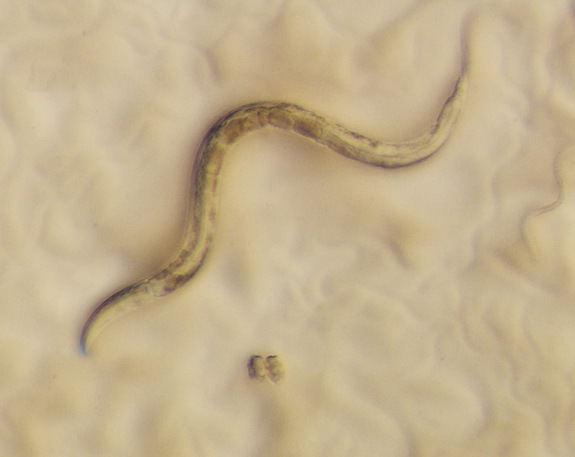Wormy Mind May Be First Step to Understanding Human Brain

To understand the human brain, scientists must start small, and what better place than the mind of a worm?
The roundworm Caenorhabditis elegans is one of biology's most widely studied organisms, and it's the first to have the complete wiring diagram, or connectome, of its nervous system mapped out. Knowing the structure of the animal's connectome will help explain its behavior, and could lead to insights about the brains of other organisms, scientists say.
"You can't understand the brain without understanding the connectome," Scott Emmons, a molecular geneticist at Albert Einstein College of Medicine of Yeshiva University in New York, said in a talk earlier this month at the annual meeting of the Society for Neuroscience in San Diego.
In 1963, South African biologist Sydney Brenner of the University of Cambridge decided to use C. elegans as a model organism for developmental biology. He chose the roundworm because it has a simple nervous system, it's easy to grow in a lab and its genetics are relatively straightforward. C. elegans was the first multicellular organism to have its genome sequenced, in 1998. [Animal Codes: Our 10 Favorite Genomes]
Brenner knew that to understand how genes affect behavior, "you would have to know the structure of the nervous system," Emmons told LiveScience.
In 1986, John White, a molecular biologist who worked with Brenner at Cambridge, mapped the complete connectome of the female C. elegans, which has about 300 neurons and more than 7,000 connections, or synapses, between brain cells. He did it by taking microscope images of slices of the worm and connecting the neurons between the slices. Donna Albertson, also with Brenner at Cambridge, started mapping the connectome of the male C. elegans — work that Emmons and his colleagues ultimately completed in 2012.
The teams sequenced both male and female roundworms to understand behaviors such as C. elegans' sophisticated mating behavior, which involves a male and hermaphroditic female that can fertilize itself. Unlike females, male worms have complex nerve circuits for copulation. By mapping these circuits, researchers have begun to get at how brain connections gives rise to behavior.
Sign up for the Live Science daily newsletter now
Get the world’s most fascinating discoveries delivered straight to your inbox.
Using the complete wiring diagram, scientists can learn something about how the worm's mind works, said Paul Sternberg, a biologist at Caltech who also studies the nervous system of the male C. elegans.
"Imagine you have a map of roads in the country," Sternberg told LiveScience. "You can learn something about where the centers are — it's very practical. But, a lot of details are missing from the map," he added.
While the wiring diagram doesn't reveal everything about how the mind functions, it does tell scientists where to look to find out, Sternberg said.
When animals wake up after sleeping, they retain their memories, and these memories may be stored in the connectome. C. elegans appears to sleep (or enter a sleeplike state, at least), and Sternberg's team is studying that process.
Scientists are also working on the connectome of more complex animals, such as fruit flies, mice and even humans. Sternberg said these efforts should be done in parallel with the worm. "But it's going to be a long haul," Sternberg said. "We're not going to get a payoff for 30 years."
Follow Tanya Lewis on Twitter and Google+. Follow us @livescience, Facebook & Google+. Original article on LiveScience.










